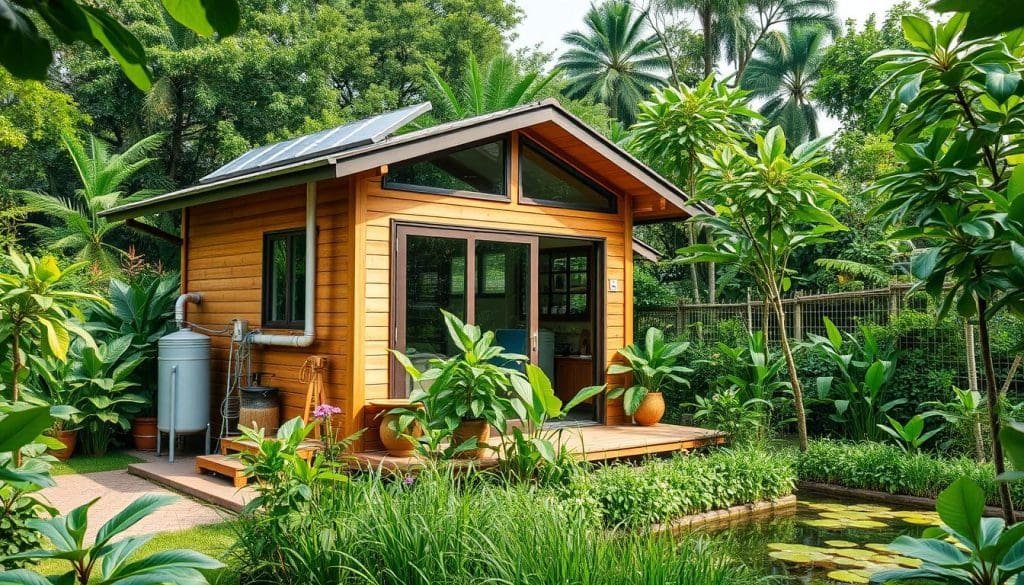The Eco-Friendly Retreat: Why Log Cabins Are a Sustainable Housing Choice

In an age where environmental consciousness is no longer a niche concern but a global imperative, the choices we make about where and how we live have come under increasing scrutiny. The modern housing industry, with its reliance on resource-intensive materials and energy-demanding construction methods, is often at odds with the principles of sustainability. However, amidst the concrete and steel, an ancient and beautiful form of architecture is re-emerging as a surprisingly eco-friendly alternative: log cabins for sale in Pennsylvania. Far from being a rustic, backwoods dwelling, a well-built log cabin represents a powerful blend of natural materials, energy efficiency, and a reduced environmental footprint, making it a compelling and sustainable housing choice for the conscientious homeowner.
A log cabin story starts with a forest. Unlike conventional building materials like concrete, steel, or brick, which require vast amounts of energy to manufacture, logs are a natural, renewable resource. When sourced from sustainably managed forests, where for every tree harvested a new one is planted, timber becomes a truly circular material. This contrasts sharply with energy-intensive materials, whose production releases significant amounts of carbon dioxide into the atmosphere. The very act of choosing wood for construction is a step towards a lower carbon footprint, and the cabin itself continues to embody this commitment throughout its lifespan.
Carbon Sequestration and Negative Carbon Footprint
One of the most remarkable environmental benefits of timber is its ability to sequester carbon. Throughout its life, a tree absorbs carbon dioxide from the atmosphere, storing it within its wood. When that tree is used to build a log cabin, the carbon remains locked away in the structure for decades, or even centuries. This makes timber a carbon sink, and a log cabin, in effect, a long-term carbon storage facility.
A study has shown that the carbon stored in a single log home can be equivalent to the emissions from driving a car for a year. This is a powerful concept. When a log cabin is built with timber from a sustainably managed forest, it can be said to have a negative carbon footprint from the start, as it is a net remover of carbon from the atmosphere. This is a level of environmental responsibility that few other building materials can claim, making log cabins a leading choice for those who are serious about combating climate change.
Inherent Energy Efficiency and Thermal Mass
The environmental benefits of a log cabin don’t end with its construction; they extend throughout its operational life. The large, solid logs that form the walls of a cabin possess a remarkable quality known as thermal mass. This means they have a natural ability to store and release heat. The logs catch the heat of the sun in the day, and at night they radiate this stored heat back into the cabin in a slow process that keeps the cabin warm. In the summer, the reverse process occurs: the logs’ thermal mass keeps the cabin cool during the day, as they absorb the heat from the sun, and release it in the evening.
This thermal and natural insulation will drastically cut down on artificial cooling and heating, saving lots of energy and decreasing the negative impact on the environment dramatically. A well-designed and properly sealed log cabin can be far more energy-efficient than a conventional home of the same size, with some studies showing reductions in heating and cooling costs by up to 30%. This inherent efficiency is a key long-term benefit, ensuring that the cabin remains an eco-friendly choice for as long as it stands.
Durability and Longevity: Built to Last
The sustainability of a building is also measured by its durability and longevity. A building that has to be rebuilt or undergoes extensive renovation every few decades is inherently less sustainable than one that can last for centuries. A properly built and maintained log cabin is a testament to durability. The robust nature of the logs, when treated with the right protective finishes, can withstand harsh weather conditions and resist decay. There are log structures around the world that are hundreds of years old, still standing as a testament to the enduring strength of timber.
This longevity is a core pillar of sustainability. It means a single log cabin can serve multiple generations of a family, reducing the need for new construction and the associated environmental costs. It’s an investment in a home that is not just for today, but for a lifetime and beyond.
Conclusion
The resurgence of the log cabin is more than a nostalgic nod to a bygone era. It is a thoughtful and practical response to the environmental challenges of our time. By harnessing the natural power of timber as a renewable resource, a carbon sink, and a high-performance insulator, the log cabin offers a powerful and comprehensive solution for sustainable housing. It is a home that lives in harmony with its surroundings, a physical representation of a commitment to a greener future.















